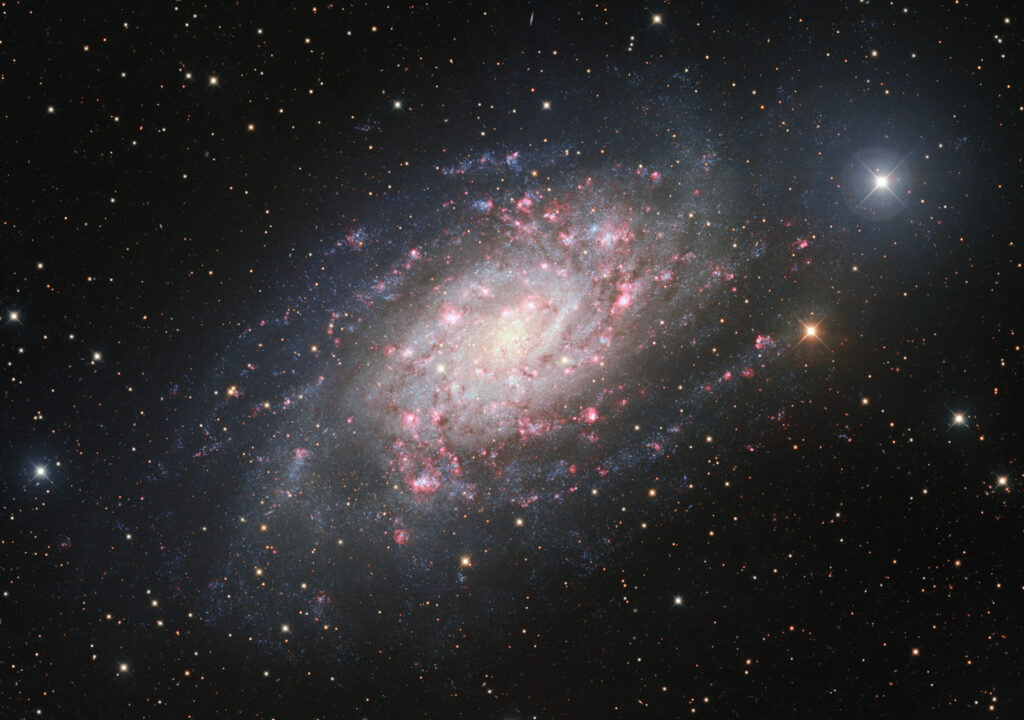The presented image was taken by the Nicholas Mayall 4-meter telescope installed at Kitt Peak National Observatory. It captures the spiral galaxy NGC 2403.

NGC 2403 was discovered by astronomer William Herschel in 1788. It is located at a distance of 8 million light-years from Earth in the direction of the constellation Camelopardalis and is part of the cluster M81, numbering about forty galaxies.
The NGC 2403 image shows many red regions scattered throughout the galaxy. These are regions of ionized hydrogen. Young hot stars are born inside them. Their powerful ultraviolet radiation ionizes the surrounding gas, causing it to glow.
But NGC 2403 is not only the birthplace, but also the place of death of stars. Over the past 80 years, two supernovae have flared up in it, designated SN 1954J and SN 2004dj. The last became the brightest supernova of the 21st century. Due to the relative proximity of NGC 2403 to Earth, astronomers were able to observe all the main stages of the grand explosion caused by the collapse of a giant star.
You can also admire the spectacular image taken by the Hubble telescope of a spiral galaxy whose shape resembles the letter S.
According to https://noirlab.edu
Follow us on Twitter to get the most interesting space news in time
https://twitter.com/ust_magazine

